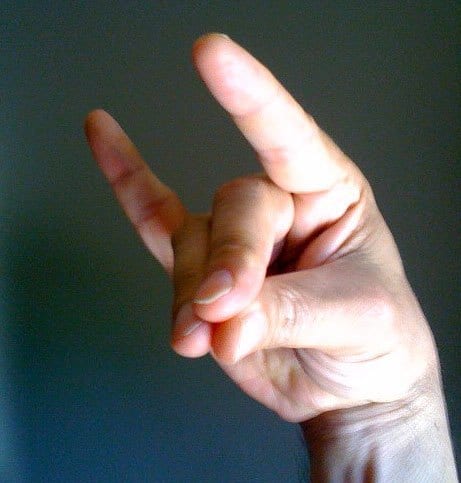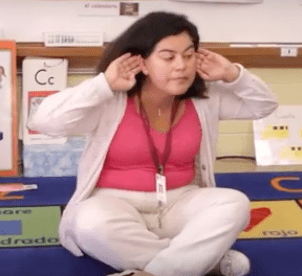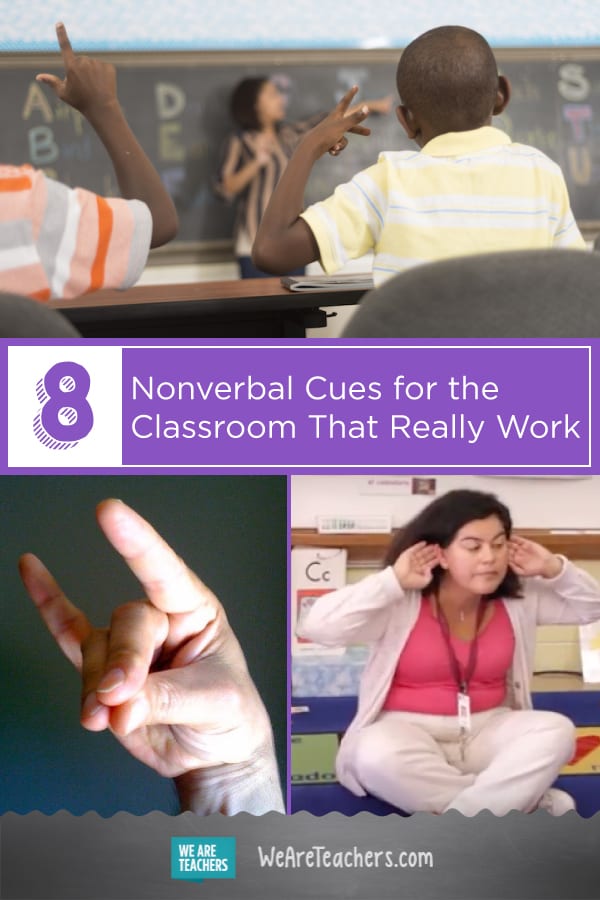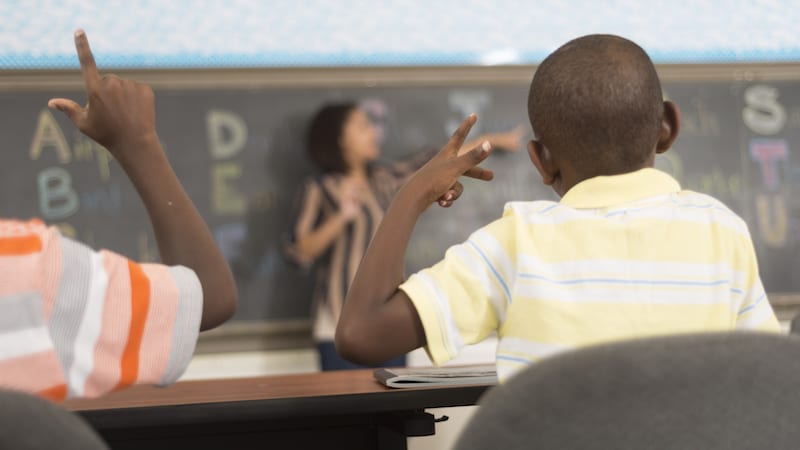Nonverbal communication can sometimes be your most effective classroom management tool. Establishing a system of hand signals in the classroom is a great way for students to communicate their needs while you’re teaching a lesson or during work time without disrupting the flow of learning. They’re also the simplest way for teachers to get a message across quickly and quietly.
Here are eight hand signals you can start using in your class immediately along with additional resources to learn more about using hand signals in the classroom.
1. Attention

Silent Coyote is a fun way to signal for attention. When the teacher shows the class the signal, students should stop talking, turn their eyes to the teacher, and return the signal.
2. Check yourself

This signal, known as Give Me Five, cues students to check that one, their eyes are looking; two, their ears are listening; three, their mouth is shut; four, they are sitting cross-legged; and five, they have their hands to themselves.
[contextly_auto_sidebar]
3. Bathroom break

No need for a student blurt out to the whole class when they need to go. Students can simply flash the Crossed Fingers signal to the teacher, wait for a thumbs-up, and be off to take care of their business.
4. Sit down
When little ones get antsy at circle time, simply show them this American Sign Language signal to remind them to quietly have a seat.
5. Yes, no, wait, I agree

The thumb is a flexible tool for signaling in the classroom. Thumbs-up signals yes, thumbs-down signals no, and thumb turned sideways can mean wait. In addition, students can hold a thumbs-up to their chest to silently signal that they agree, which is especially helpful during circle time when kids tend to blurt out their opinions and stories.
6. Thank you

Another American Sign Language gesture, this signal can show your students that you appreciate it when they respond to your direction or when they’re doing a good job at a task.
7. Help

Instead of raising their hand for the whole class to see, students can use this unobtrusive signal to show that they need further instruction or assistance. This signal is particularly helpful during circle time when students are seated in close proximity.
8. Listen

This signal helps students focus on listening to the speaker. It’s great when you don’t need to quiet the whole group but need to give a gentle reminder to an individual or small cluster of kids. For more helpful tips, watch this video.
Be sure to check out the free hand-signal-in-the-classroom resources from The Science Penguin and Melissa Mazur.
Do you use hand signals to communicate with your class? Come share your favorites in our WeAreTeachers HELPLINE group on Facebook.
Also, check out 5 Strategies to Use With Your Squirmiest, Wiggliest Students.



